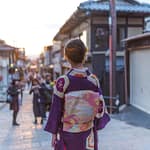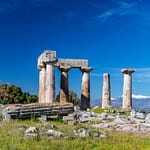TRAVEL AROUND
ITALY
Italy, nestled in the heart of Europe, is a destination that captivates travelers from all walks of life. Whether you’re a backpacker on a budget, a couple seeking romance, a solo explorer, a luxury traveler, a digital nomad, or an outdoor enthusiast, Italy has something special for you.
From the snow-capped peaks of the Alps to the sparkling waters of the Mediterranean, from historic cities brimming with art and culture to picturesque coastal towns and charming mountain villages—Italy offers an unmatched diversity of experiences. Every corner of this beautiful country has its own story to tell.
If you’re gearing up for your first adventure to Italy, this guide will provide everything you need to know: essential travel facts, the top destinations, cost breakdowns, must-have items, and tips for making the most of your trip. Let’s get you ready to experience Italy’s unique charm in the smartest and most exciting way possible.
Top Destinations in Italy

Rome

Venice

Florence

Lake Como

Cinque Terre

Sardinia

Milan

Dolomites
Smart Travel Tips & Costs for Visiting Italy
Italy—where timeless beauty, rich history, and mouthwatering cuisine collide. If you’re planning to wander through its charming streets and breathtaking landmarks, here’s your ultimate guide to making the most of your Italian escape, with smart travel tips and a breakdown of costs to ensure you don’t miss a thing (without emptying your wallet)!
Best Time to Visit Italy
- Spring (April – June): Ideal weather (15-25°C/59-77°F), fewer crowds, and vibrant festivals. Perfect for sightseeing and countryside exploring.
- Summer (July – August): Hot (30°C/86°F+), lively beaches, and major festivals. Expect crowds and higher prices.
- Fall (September – November): Comfortable weather, harvest season (wine and truffles), and fewer tourists. Great for food and wine lovers.
- Winter (December – February): Festive charm, lower prices, fewer crowds, and winter sports in the Alps. Mild in the south, chilly in the north.
Best Pick: Spring and Fall for pleasant weather and fewer tourists, Summer for festivals and beaches, Winter for budget travel and a festive vibe.
Travel Tips
Learn Basic Italian Phrases
- Even though you can get by with English in many tourist hubs, the magic happens when you greet a local with “Buongiorno!” (Good morning) or “Grazie!” (Thank you)), and “Per favore” (Please) will make your interactions more pleasant. A few words go a long way in showing respect for the culture.
Seek Authentic Stays
- If you’re looking for a more local experience, consider staying at an Agriturismo (rural farmhouse) or Airbnb properties outside the touristy areas, which can be more affordable and provide a unique glimpse into rural Italy.
Public Transport is Your Best Friend
- Italy’s public transportation is both efficient and easy on the budget. Trains zip between cities like Rome and Florence in style, while buses and trams help you navigate cities like Milan and Venice. Save your cash for gelato and skip taxis unless you’re in a pinch.
Don’t Skip the Lines—Book Ahead
- Major attractions like the Colosseum, Vatican Museums, and Uffizi Gallery often feature long queues. Avoid wasting precious time and book tickets online. Many places even offer discounts for early bookings!
Cash vs. Cards
- Credit cards are common in big cities, but carrying some cash (Euros) is a smart move, especially when you’re in smaller towns, markets, or charming family-run cafes may prefer cash payments.
Travel Costs
Accommodation
- Budget: Dorms or basic hostels can cost €20-€40 per night—perfect for the budget traveler or those on the move.
- Mid-Range: Cozy guesthouses or charming 3-star hotels will likely set you back €70-€150 per night, depending on the city.
- Luxury: Expect €200+ per night for top-tier hotels or boutique stays in iconic cities like Rome or Venice.
Meals
- Grab-and-Go: The classic street food—a slice of pizza, a panino, or a creamy gelato—ranges between €5-€10.
- Casual Dining: Head to a trattoria for a classic pasta or pizza meal, costing €15-€25 per person.
- Gourmet Dining: Feeling fancy? For a multi-course meal at a refined restaurant, budget €40-€70 per person.
- Caffeine Fix: For a quick espresso or cappuccino, you’re looking at €1-€3—just don’t sit down at the bar; stand and save some euros!
Transportation
- Public Transportation (Trains, Buses, Metro):
- Trains: Prices vary based on distance. A short regional train trip may cost €5-€20. High-speed trains like Frecciarossa can range from €30-€70 depending on the route and class.
- Metro/Bus: In cities like Rome, Milan, or Florence, a single ride on public transit is usually around €1.50-€2.00.
- Taxis: Starting fare for a taxi is around €3-€5, with additional charges for distance and luggage.
- Car Rental: If you’re planning to explore the countryside, renting a car can cost around €30-€50 per day. Keep in mind that gas is expensive, and parking in big cities is limited (and expensive!).
Attractions
Must-See Attractions:
- Colosseum, Rome: The iconic arena costs about €16 to visit, but for guided tours or fast-track access, the price can rise.
- Uffizi Gallery, Florence: A ticket for this world-renowned museum runs around €20-€25.
- Vatican Museums, Vatican City: Entry into this treasure trove of art and history is around €17-€30.
- Pompeii: A visit to this ancient city will set you back about €15.
Free Attractions:
- Many stunning churches, piazzas, and public spaces are free to enjoy—think of Piazza del Duomo in Milan or Piazza Navona in Rome. Wander the cities for free experiences!
- Walking around cities like Venice or Florence and enjoying the architecture and scenery is free!
Money-Saving Tips
- Eat Where Locals Eat: Skip the overpriced tourist traps around landmarks. Venture a few blocks away and you’ll find delicious and affordable meals at trattorias or pizzerias. Ask locals for recommendations—they know where the best deals are.
- Free Days at Museums: Many Italian cities offer free museum days (often the first Sunday of the month). Make sure to plan accordingly so you can take advantage of these hidden gems.
- City Passes Are Your Friend: For a more streamlined experience, grab a city pass like the Roma Pass for Rome or the Firenze Card for Florence. These give you access to several top attractions, skip-the-line privileges, and sometimes even public transport.
Final Word: Travel Smart, Travel Wise
Italy’s irresistible charm, it’s easy to see why millions flock to its shores each year. Whether you’re wandering the winding streets of Venice, exploring ancient ruins in Rome, or savoring authentic pasta in Tuscany, a little planning can go a long way in helping you enjoy Italy on any budget. Buon viaggio! ✨
Safety standards in Italy
Italy follows strict safety standards governed by national laws and EU regulations. Key areas include:
- Workplace Safety: The cornerstone is Legislative Decree 81/2008, which mandates risk assessments, the provision of PPE, and ongoing worker training to ensure safe working environments.
- Building & Fire Safety: Strict fire safety measures are in place, including clear exit routes, fire extinguishers, and building codes designed to withstand seismic activity, especially in earthquake-prone areas.
- Product Safety: Products sold in Italy must bear the CE mark, indicating compliance with EU safety standards, ensuring consumer protection.
- Road & Transport Safety: Italy enforces rigorous road safety laws, including speed limits, regular vehicle inspections, and special rules for transporting hazardous materials.
- Environmental & Health Safety: From waste disposal to air and water quality, Italy follows EU regulations to safeguard the environment. Food safety is also closely regulated to protect public health.
- Electrical & Equipment Safety: Products like machinery and electrical equipment must meet stringent safety criteria to prevent accidents.
- COVID-19 Measures: Italy introduced comprehensive health measures, including mask-wearing, social distancing, and vaccination or testing for access to certain venues.
Compliance is closely monitored by inspectors, with penalties for non-compliance to ensure public and worker safety.



